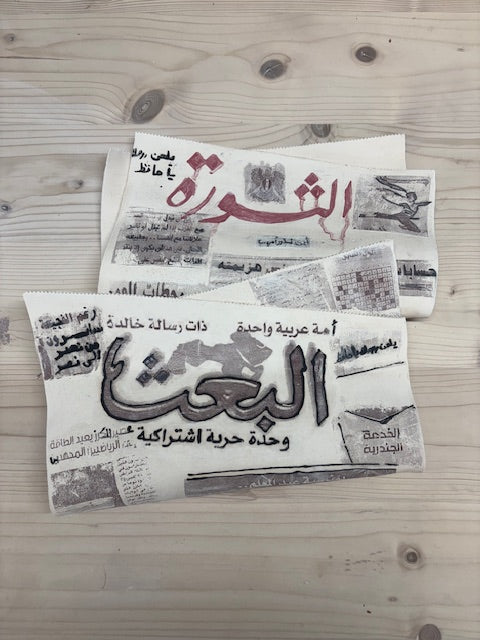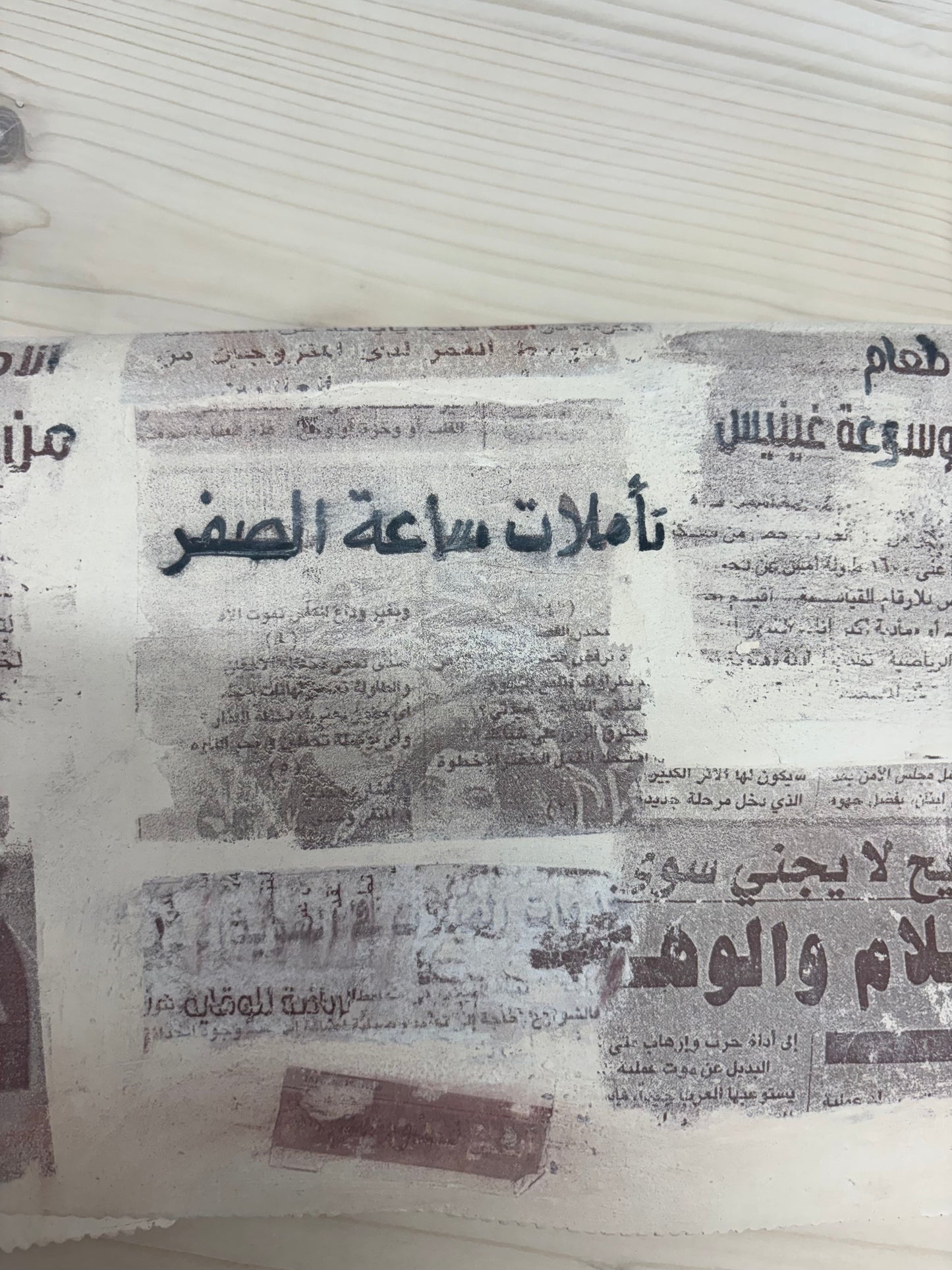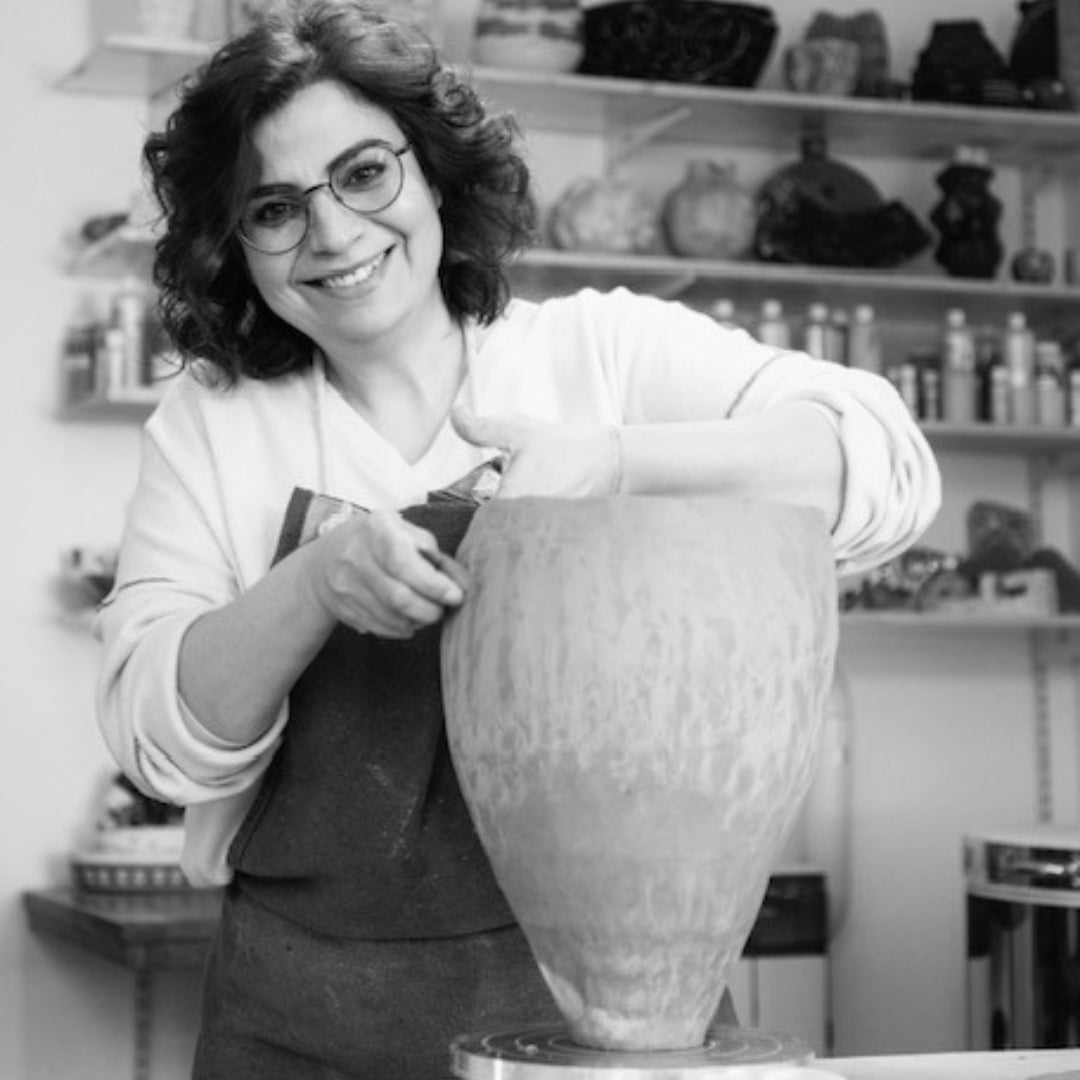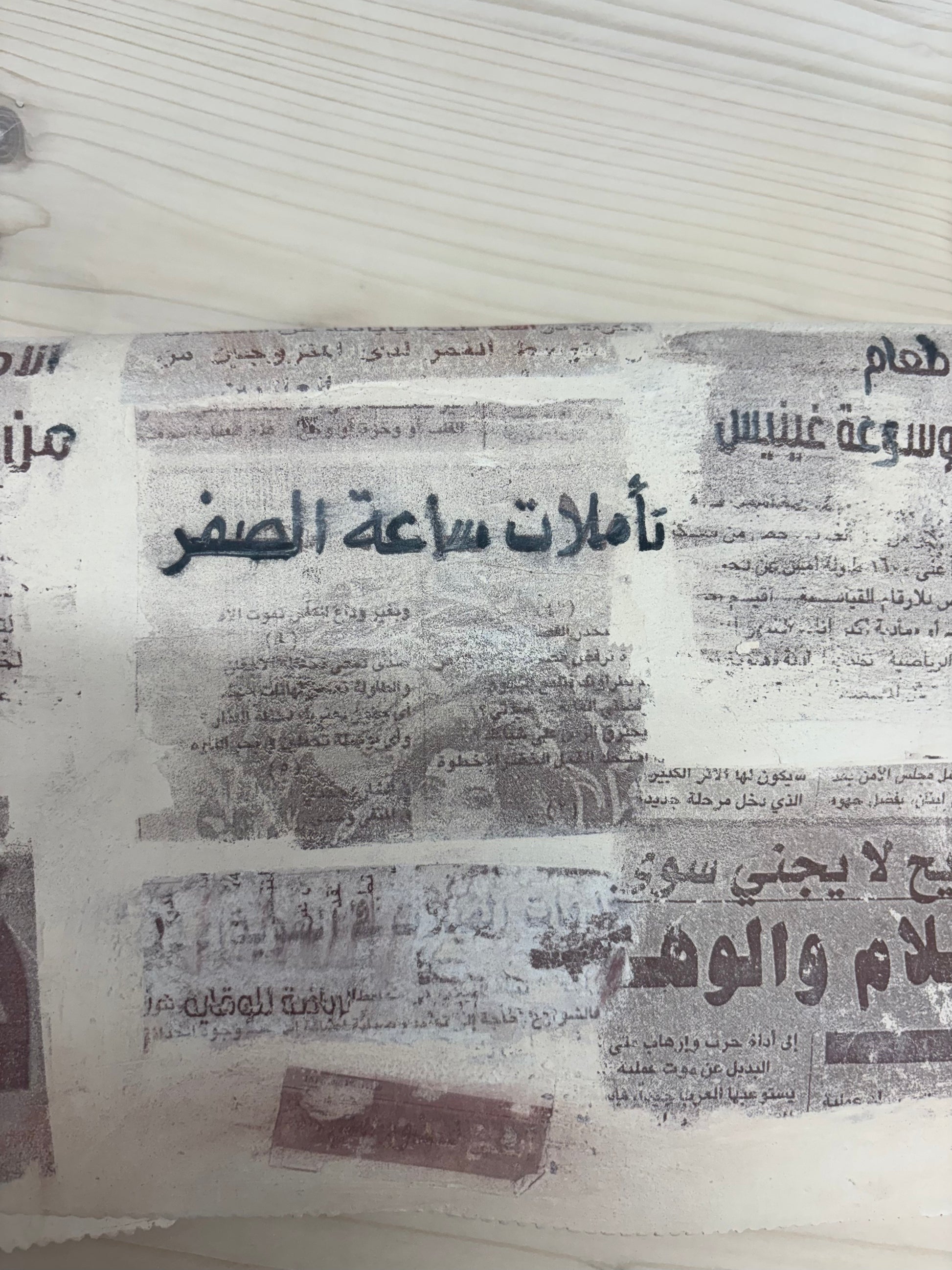Syrian Newspapers - Al-Ba’ath & Al-Thawra
Syrian Newspapers - Al-Ba’ath & Al-Thawra
By Dana Mufti
In Artworks
Couldn't load pickup availability
Stock level: 1 left
Item details:
▸ Features: Handmade Unique Piece▸ Art technique: Sculpture
▸ Dimensions (cm): 5.0 x 32.0 x 20.0
▸ Net Weight (kg): 1.0
A reproduction of a national newspaper from Syria’s war years, filled with surreal headlines about health and Guinness records while the population was fleeing or starving. A critique of denial and propaganda.
Hand-built stoneware with printed transfers and oxides. Made with stoneware, oxide, and newspaper decals.
Production year: 2025.
Artist Statement
My art is deeply influenced by the changing world around me. It’s a reproduction of my emotions — of lived moments and witnessed events — shaped by the aftermath of Syria’s war. The absence of home, the transformation of identity, and the forced resilience to exist between worlds are all central to my work. I use ceramics to speak about what war, exile, and memory leave behind — and what still survives.
In this series, I work with hand-building and slip-casting techniques. I distort forms, carve into them, and add textures like sand, wires, or imagery. One piece re-creates a Syrian national newspaper from the war years — surreal headlines and empty slogans published while people were starving, fleeing, or dying.
Love in Wartime is about the fragility of connection. The Arabic word for “love” is broken, filled with spikes, yet blooming. The flowers are explosive and sharp. It’s about how love survives (or doesn’t) in extreme conditions.
The video piece, Under the Rubble, captures what’s left behind: a gun, broken tiles, a vodka bottle — symbols of destruction and foreign influence. A single red flower sits above it all — red like blood, or maybe resistance.
Working with clay is therapeutic. Holding and forming it feels like a dialogue — I shape it,
but I also listen. It's how I express grief and still show beauty. My ceramics hold stories — cracked, yes — but always trying to rebuild something, and maybe connect through that shared vulnerability.



About Dana Mufti

Dana Mufti is a Syrian-Austrian ceramic artist based in Vienna. Her path to art has been anything but linear — before arriving at ceramics, she worked across literature, translation, entrepreneurship, and fundraising. It was clay, however, that offered her the language she had been searching for, a medium that allowed her to express what words could not.
Her practice centres on hand-building and slip-casting techniques. Many of her forms begin in simplicity — a jar, a block — then evolve through processes of distortion, carving, layering, and the addition of unexpected materials such as sand, wires, or transfers. She often weaves Arabic calligraphy and photographs collected during her travels in the Middle East into her work. These fragments hold the weight of memory, heritage, and loss, deeply marked by experiences of war and displacement.
Much of her artistic exploration reflects on the emotional and physical aftermath of Syria’s war: what has been broken, what is missing, and what still clings to life. Living between cultures as a woman has also shaped her work — she has often been compelled to explain or defend her origins, to correct stereotypes, and to navigate layers of misconception, all while creating space for complexity.
For Mufti, clay is not only material but voice. It enables her to speak of pain, of beauty, and of the uncertain space between. It also builds bridges, offering connections with others across differences — connections she considers essential.
She has participated in exhibitions and residencies across Europe. What matters most is resonance: that someone might see themselves reflected in the cracks of her work, share a memory it evokes, or carry forward a fragment of hope for a more humane future in the region.



